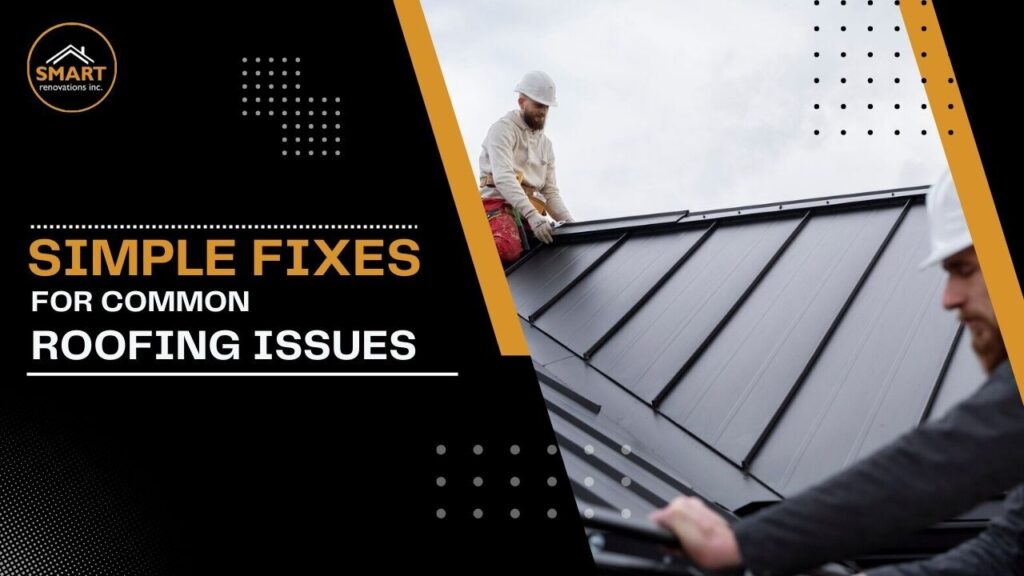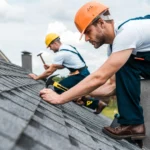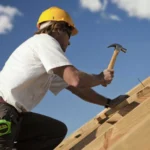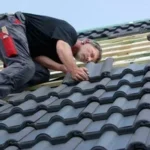In the realm of domestic upkeep, the roof stands as a silent sentinel, often unacknowledged until its defenses falter. Yet, it is this very shield that protects our dwellings from the relentless assault of the elements. Neglecting its care can lead to a cascade of woes, from minor inconveniences to significant structural damage. This guide shall illuminate the Simple Fixes For Common Roofing Issues, empowering homeowners to address these vexations and perhaps even consider the long-term resilience offered by a metal shingle roof installation, a choice that speaks to enduring protection.
I. Addressing the Onset of Water Intrusion: The Battle Against Leaks
A. Identifying and Rectifying Minor Shingle Damage: A First Line of Defence
The insidious drip, the telltale dampness – these are the harbingers of leaks, often stemming from compromised shingles. A careful visual inspection, undertaken with safety as a primary concern, can reveal the offending tile. Minor cracks or breaks can often be remedied by replacing the damaged shingle with a suitable spare, secured with roofing cement and appropriately fastened nails. For less severe damage, a liberal application of roofing sealant can provide a temporary barrier, offering a reprieve until a more permanent solution, such as the robust protection of a metal shingle roof installation, can be contemplated.
B. The Importance of Sound Flashing: Sealing Vulnerable Penetrations
Flashing, the unsung hero around chimneys, vents, and other roof intrusions, forms a critical watertight seal. When loose, damaged, or absent, it creates pathways for water to infiltrate. Regular inspection of these areas is crucial. Loose flashing can often be re-secured with roofing nails or screws. Damaged sections may necessitate replacement, a task best entrusted to professionals, particularly when considering the precise installation required for a metal shingle roof installation. Neglecting compromised flashing can lead to significant and costly water damage within the structure.
Also check out these:
The Role of Advanced Recycling Techniques in Roofing Material Production
Sustainable Roofing in 2030: What to Expect Next
II. Maintaining Proper Drainage: The Essential Role of Gutters
A. The Bane of Clogged Gutters: Preventing Water Diversion Issues
Gutters, the seemingly simple channels along the roof’s edge, play a vital role in directing rainwater away from the foundation. When choked with debris such as leaves and twigs, their function is impeded, leading to overflows that can damage eaves, fascia, and even the building’s walls. The straightforward remedy lies in regular and thorough gutter cleaning. Armed with appropriate tools and caution, homeowners must remove the accumulated detritus, ensuring unobstructed flow. Consistent maintenance, especially during seasons of falling foliage, can prevent significant water damage and prolong the lifespan of the roof, potentially delaying the need for a complete replacement, though the efficient drainage offered by a well-installed metal shingle roof installation should still be considered for long-term benefits.
III. Addressing Material Degradation and Biological Growth
A. Understanding and Monitoring Granule Loss: A Sign of Asphalt Shingle Age
The protective granules on asphalt shingles shield the underlying material from the sun’s harmful ultraviolet radiation. Over time, natural wear and tear cause these granules to loosen and wash away. While some loss is expected with age, excessive shedding indicates that the shingles are becoming vulnerable. Regular visual inspection can help monitor the extent of granule loss. Exposure of the underlying asphalt signifies the approaching end of the shingles’ service life, prompting consideration of replacement options, perhaps with the enduring and aesthetically pleasing metal shingle roof installation.
B. Combating Moss and Algae: Preserving Roof Integrity and Appearance
In damp and shaded environments, moss and algae can colonize the roof surface, not only detracting from its appearance but also retaining moisture that can degrade roofing materials. These growths can be addressed with gentle cleaning using a soft brush and a specialized roof cleaning solution. Harsh scrubbing or high-pressure washing should be avoided to prevent shingle damage. Preventative measures, such as installing zinc or copper strips near the roof ridge, can inhibit future growth. The smoother surface of a metal shingle roof installation often exhibits greater resistance to such biological colonization.
IV. Recognizing and Responding to Structural Concerns
A. The Warning Signs of Sagging or Warped Decking: Seeking Professional Expertise
Visible dips or unevenness in the roof’s surface often indicate underlying issues with the roof decking, the wooden sheathing beneath the shingles. This can be caused by structural problems or water damage. Simple fixes are rarely applicable in these situations. Early detection and prompt consultation with a qualified roofing professional are crucial. Ignoring a sagging roof can lead to more extensive structural damage and significantly higher repair costs, a scenario homeowners may wish to avoid by considering the robust structural integrity often associated with a professionally installed metal shingle roof installation.
Also check out these:
10 Best Roofing Companies in the USA for Commercial Projects
Top 10 Roofing Materials for 2025: Which Is Best for Your Needs?
V. The Unseen Necessity: Ensuring Proper Roof Ventilation
A. The Importance of Airflow: Maintaining Roof Health and Longevity
While not a direct “fix” for a visible problem, ensuring adequate ventilation within the attic space is paramount to the overall health and longevity of the roof. Poor airflow can trap heat and moisture, leading to premature deterioration of roofing materials, the growth of mold and mildew, and increased energy consumption. Simple preventative measures, such as ensuring that all vents are clear and unobstructed, can make a substantial difference. The design of a metal shingle roof installation often incorporates features that promote efficient ventilation, contributing to its long-term performance and durability.
Conclusion: Proactive Maintenance and Informed Choices for Lasting Roof Protection
In summation, diligent homeowners, while addressing common roofing issues with simple fixes can provide temporary relief and prevent minor problems from escalating, a proactive approach to roof maintenance is the most effective strategy for long-term protection. Regular inspections, prompt attention to even seemingly minor concerns, and informed decisions regarding roofing materials are key to safeguarding your most vital defense against the elements. As you consider the enduring security and aesthetic advantages of your home’s crown, the resilience and longevity offered by a metal shingle roof installation stand as a testament to a wise and forward-thinking investment, promising years of reliable protection and potentially minimizing the need for frequent repairs. Embrace these principles, and may your roof stand steadfast against the trials of time and weather, ensuring the safety and comfort of your dwelling for years to come.
Check our google store: Smart Renovation Inc







